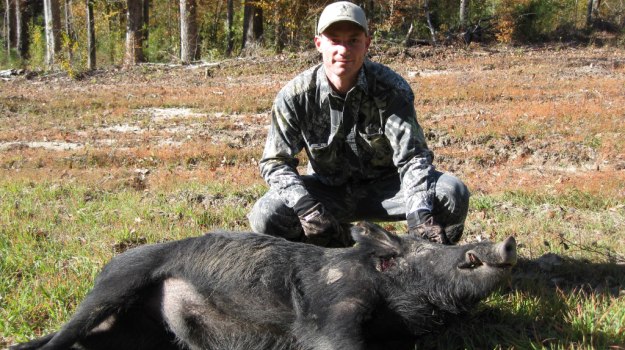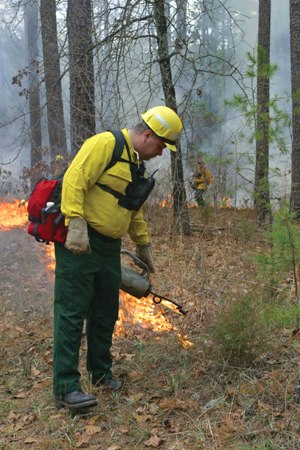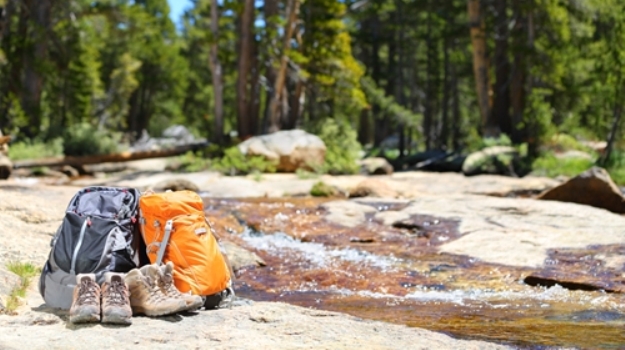
Editor’s Note: Brian Hicks lives in southeast Texas near Beaumont. He deer hunts about 200 acres of private lands and two different national forests each season. Both of the national forests that he hunts have heavy hunting pressure. Yet, each season he consistently takes older-age-class bucks that will score 120 to 150 on Boone & Crockett.
Once my trail camera pictures start showing me bucks with one antler or bucks with no antlers, I’ll go to the woods looking for sheds. If I'm hunting on my private 200 acres, I’ll search for droppings in my food plots. Also I’ll start hunting winter thermal cover areas on both my private land and U.S. Forest Service land I hunt. On public lands, I’ll check creek drainage areas and places where I find the thickest hardwoods. I’ll walk down those trails going into the thicker hardwoods, and I’ll watch for sheds on either side of the trails.
 During March and April, I hope to find five to 20 sheds. Usually, I can compare the sheds to the photos I have on my trail cameras and identify the bucks. By using this system, I can keep up with my bucks from year to year and see how much antler development they’ve had from one year to the next. I enjoy attempting to find the sheds of bucks that I've watched for several years to keep up with their growth rate. The sheds also tell me whether the bucks I've been watching have survived the season, and which travel corridors they’re using at the end of the season. After the season is over, I’ll have about six trail cameras out on public lands. After I've censused one area, I can move those trail cameras somewhere else to see what deer are still traveling after the season in different regions. Most seasons, I can pinpoint about 20 bucks after the season of varying ages. Generally about four of those 20 bucks will be shooter bucks.
During March and April, I hope to find five to 20 sheds. Usually, I can compare the sheds to the photos I have on my trail cameras and identify the bucks. By using this system, I can keep up with my bucks from year to year and see how much antler development they’ve had from one year to the next. I enjoy attempting to find the sheds of bucks that I've watched for several years to keep up with their growth rate. The sheds also tell me whether the bucks I've been watching have survived the season, and which travel corridors they’re using at the end of the season. After the season is over, I’ll have about six trail cameras out on public lands. After I've censused one area, I can move those trail cameras somewhere else to see what deer are still traveling after the season in different regions. Most seasons, I can pinpoint about 20 bucks after the season of varying ages. Generally about four of those 20 bucks will be shooter bucks.
Why and How I Burn:
A prescribed burning regime clears-up the litter off the forest floor and releases nutrients that speed the growth of young plants that open up the woods to create more food and a better habitat for the deer. Usually after deer season, I start a burning regime on the 200 acres that I own that backs up to U.S. Forest Service land. I’ll only burn about 15 acres of my 200 acres each year, usually in one or two different areas. I want to create a diversity of habitat for the deer. I plant green fields, I’ll have some burn areas, and I’ll have some thickets. Then the deer have an abundance of natural food, open places, thick bedding areas and green fields for supplemental feeding. This burning regime is also advantageous for turkeys, quail and other wildlife.
I believe that deer management is more than…
- throwing out some seed and hoping it produces a green field,
- having a systematic burning regime,
- keeping your buck/doe ratio as close to one-to-one as you can,
- doing predator control each year and
- letting your bucks move into the older-age-classes. To produce older-age-class bucks with bigger racks, I believe I have to do all of this and always try to hunt where the deer least expect me to be.



























